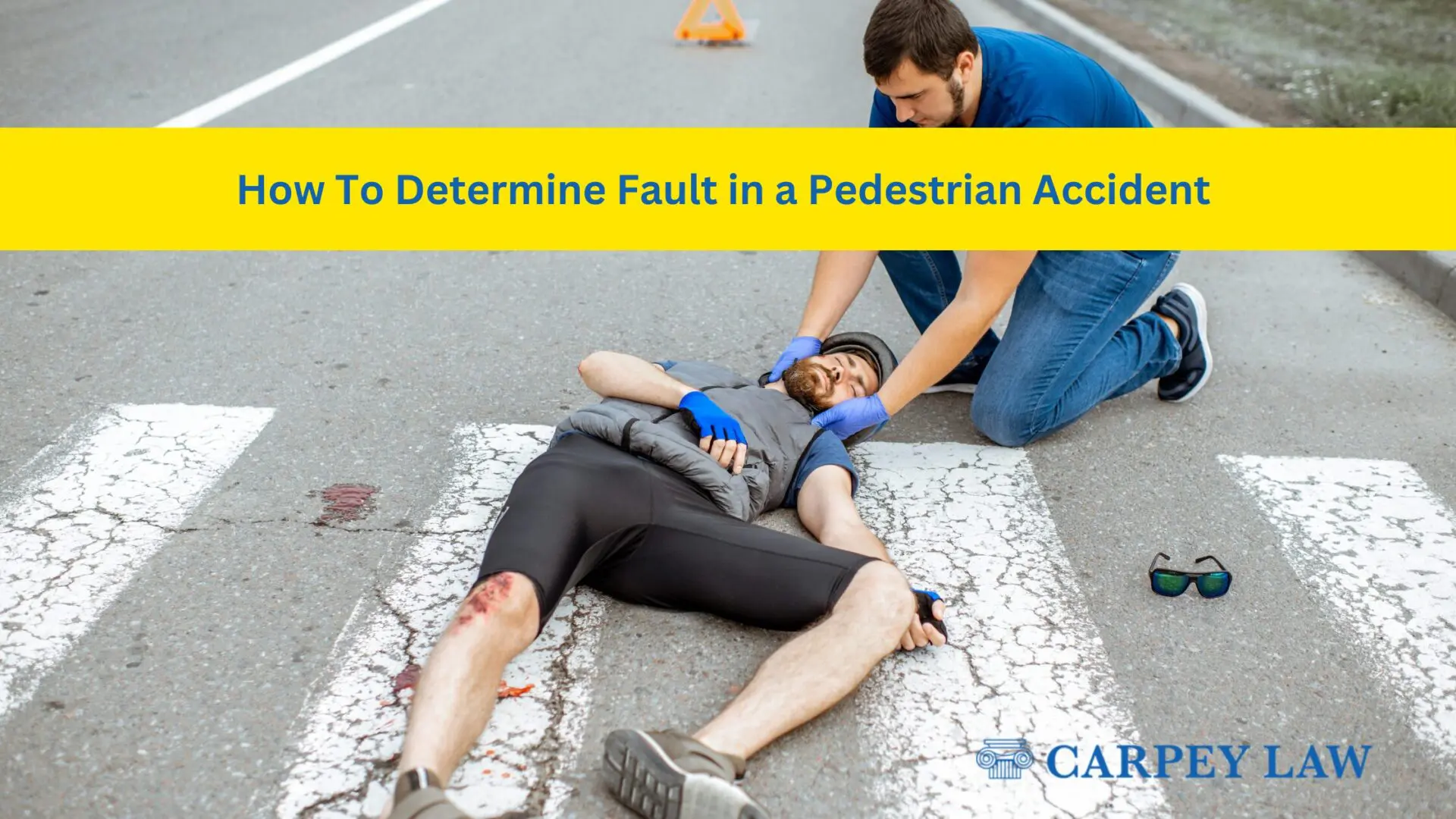Determining fault is a critical component in establishing which party is liable for injuries incurred when a car hits a pedestrian. In states such as Pennsylvania, modified comparative negligence complicates the assignment of responsibility for the victim’s damages. Fault can solely rest on the driver, the pedestrian, or a combination of the two. However, it is very rare in cases where a car hits a pedestrian, that the pedestrian is at fault.
What is Negligence in a Pedestrian Accident?
Negligence is defined as the failure to exercise the care that a reasonably sensible person would exercise in similar circumstances. Negligence in a pedestrian accident is determining who was at fault when a car hits a pedestrian or what proportion of fault each party is responsible for in the accident.
How is Fault Determined in Common Pedestrian Accident Scenarios:
Determining who is at fault when a car hits a pedestrian can ascertained by identifying common scenarios where such incidents occur:
Crosswalk Accidents
Pedestrians have the right away when in a crosswalk. Drivers are legally responsible for yielding to pedestrians who are traversing a crosswalk. Crossings that are outfitted with signals, both drivers and pedestrians are required to abide by the signals and signs at that particular crossing.
Jaywalking Accidents
When pedestrians cross streets outside the boundaries of a crosswalk, they are considered jaywalking. Pedestrians can be cited for jaywalking, but fault, when a car hits a pedestrian, is shared between the driver and the pedestrian. However PA follows comparative negligence, so pedestrians may still recover damages and the amount depends on the percentage of fault.
Unmarked Crossings
Who is at fault when a car hits a pedestrian in an unmarked crossing can have a number of factors determining which party is responsible or what percentage of responsibility for the accident is at fault. Drivers can be liable for accidents in unmarked crossings if they are speeding, distracted, or fail to obey traffic signage.
Pedestrian Distractions
In the case of distracted pedestrians, determining fault for the accident lies in whether the pedestrian contributed to the accident. In many cases, the driver is held liable for the accident. Yet, if the pedestrian was found to have contributed to the accident, such as being distracted by their phone or by other means, the driver may be responsible for only part of the damages that may be recovered by the injured.
Other Factors Used to Determine Fault in A Pedestrian Accident
Pedestrian Intoxication
Similar to a distracted pedestrian, if proven that the intoxication of the pedestrian caused or led to the accident the fault of the driver can be diminished.
Traffic signals
Failing to obey traffic signals or other traffic signage can weigh significantly when determining fault in a pedestrian accident. Regardless of which party violated the traffic signal, it can be an essential component in who bears greater liability in the accident.
Speeding
Increasing the severity of injury and lessening reaction time, speeding can have a critical impact on determining fault in a pedestrian accident. Drivers who were speeding in a pedestrian accident can be held liable for the accident.
Driver Distractions
Driver distractions are dangerous behaviors that significantly influence the determination of fault in a pedestrian accident. Regardless of manual, visual, or cognitive distraction, fault or the percentage fault will greatly increase if driver distraction was a factor in the accident.
What is Shared Fault or Comparative Negligence in a Pedestrian Accident?
Many states uphold shared or comparative negligence in the case of pedestrian accidents. In comparative negligence, both the plaintiff and defendant are determined to have a percentage of fault. The larger the contribution of fault, the lesser amount of damages may be recovered. In a state such as Pennsylvania that utilizes modified comparative negligence, if the pedestrian is found to contribute to over 51 percent of the fault, they are unable to recover any compensation from the driver for injuries sustained in the accident. Comparative negligence can vary greatly from state to state and it is critical to know the law to recover damages for your injuries.
How a Pedestrian Accident Attorney Can Help Prove Negligence
A pedestrian accident attorney is crucial to protect your rights and assist you in receiving the compensation you deserve. Pedestal accident attorneys help obtain the necessary evidence to prove negligence. By acquiring police reports, medical records, and witness testimonies, pedestrian accident attorneys can help you seek justice.
If you or a loved one has sustained injuries from a pedestrian accident, call the experts at Carpey Law to help guide and assist you through these difficult times and help get back on the road to recovery.
Related Blogs on Pedestrian Accidents
Main Causes of Pedestrian Accidents
Pedestrian Accident Statistics

Stuart A. Carpey, who has been practicing as an attorney since 1987, focuses his practice on complex civil litigation which includes representing injured individuals in a vast array of personal injury cases.

